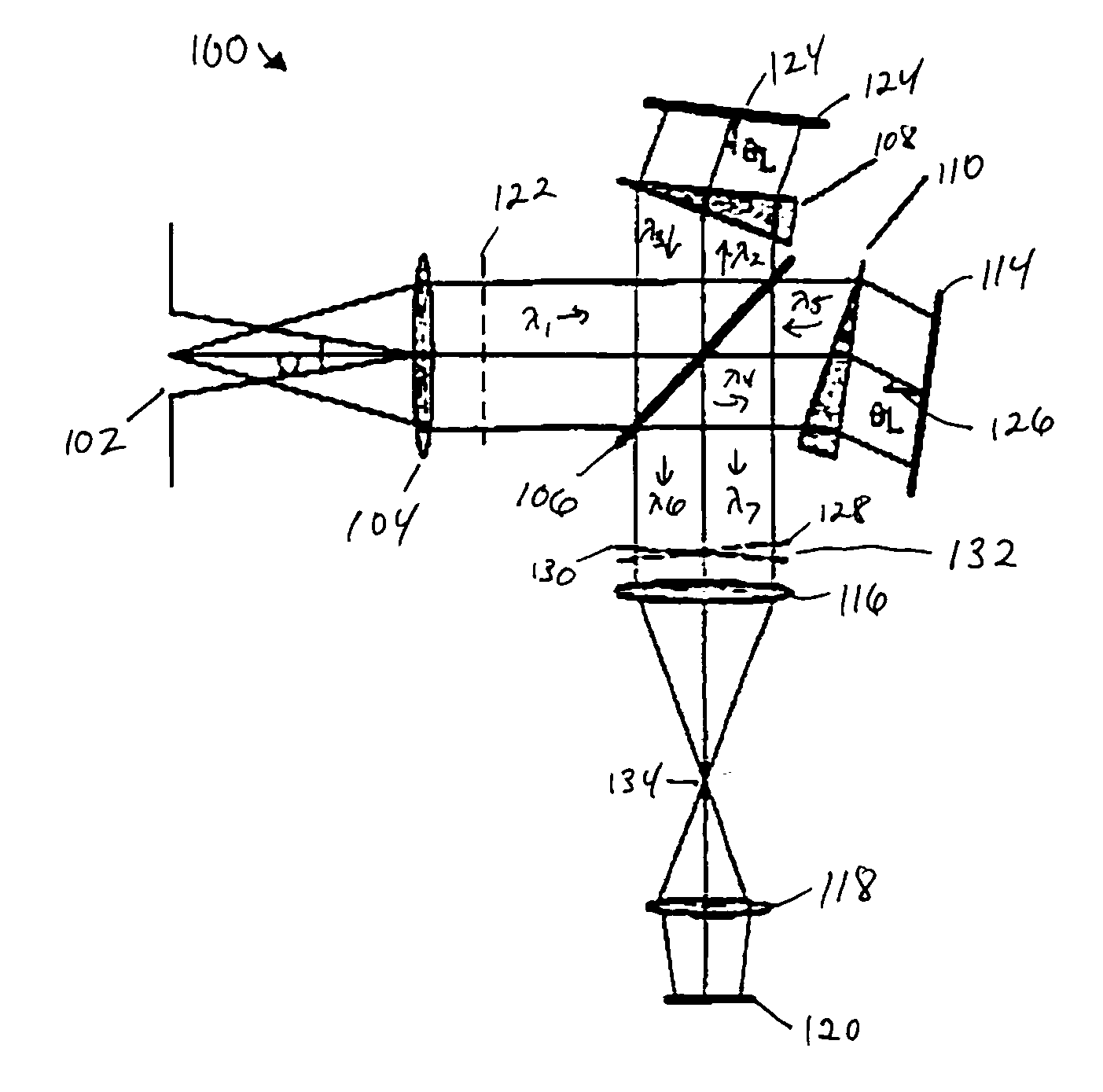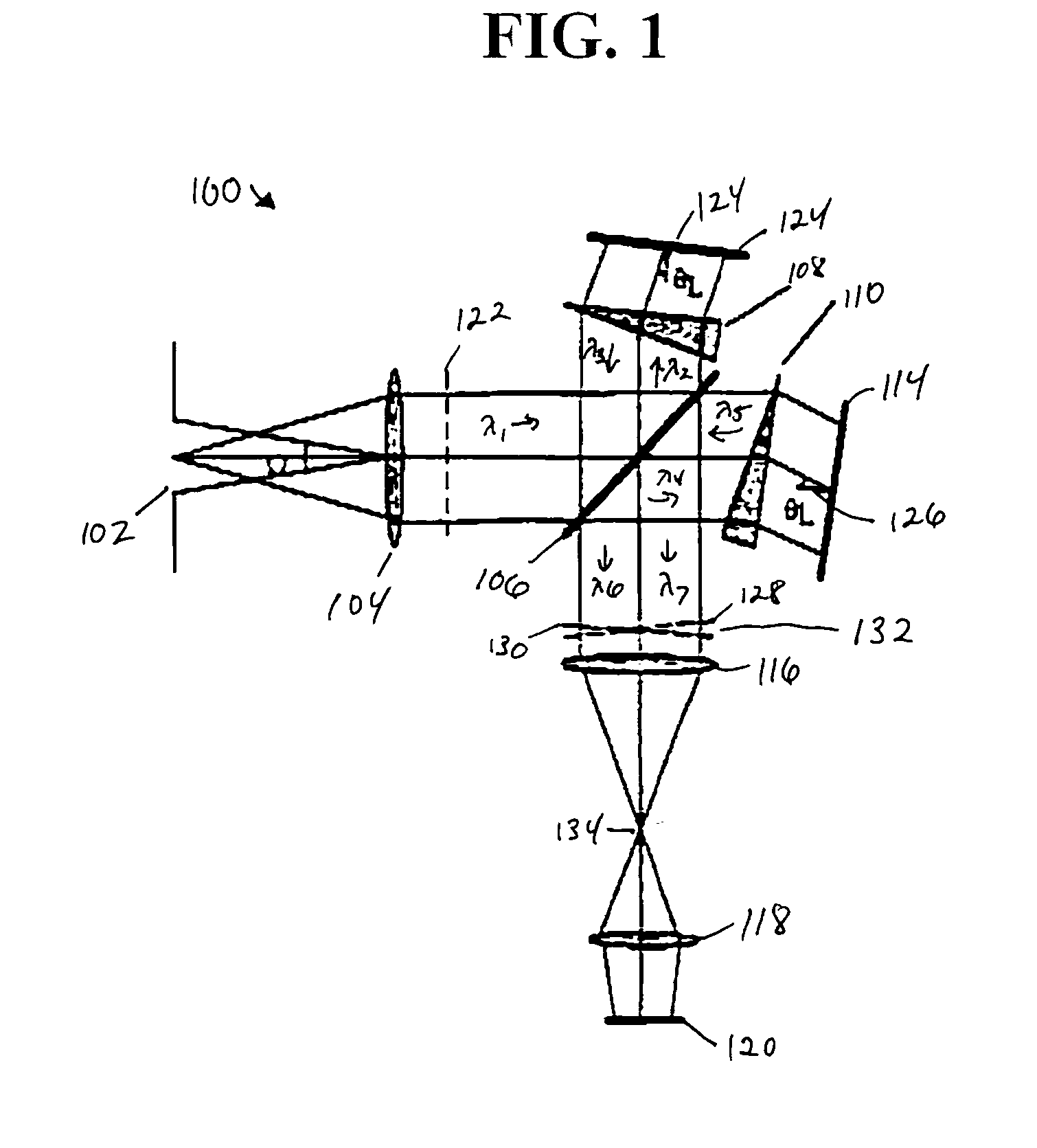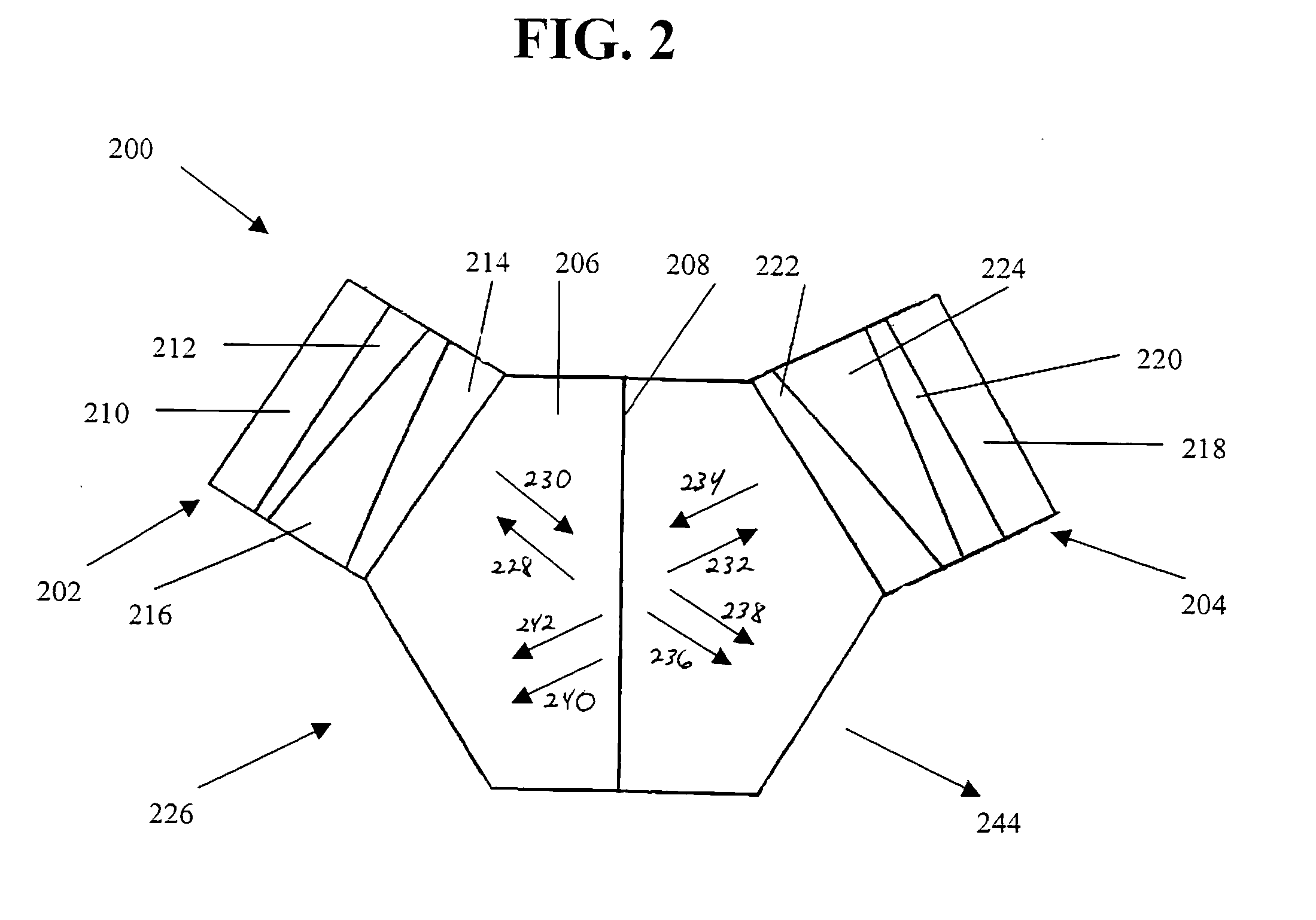Compression assembly of spatial heterodyne spectrometer (SHS)
a heterodyne spectrometer and compression assembly technology, applied in the field of compression assembly of spatial heterodyne spectrometers, can solve the problems of complicated adjustment of optics mounts, particularly sensitive to vibration, and the general weight of conventional discrete optical element types of shs interferometers
- Summary
- Abstract
- Description
- Claims
- Application Information
AI Technical Summary
Benefits of technology
Problems solved by technology
Method used
Image
Examples
Embodiment Construction
[0031]FIG. 4 illustrates a cubic interferometer SHS compression assembly for use in a SHS interferometer in accordance with an exemplary embodiment of the invention. As seen in the figure interferometer 400 includes an optical beamsplitter 406, a first leg portion 402, a second leg portion 404, a First retaining portion 464, and a second retaining portion 466. Optical beamsplitter 406 includes an input face 456, an output face 458, a first processing face 460, and a second processing face 462. First leg portion 402 includes a first optical grating 410, a first field-widening prism 416 and a first spacer system. Second leg portion 404 includes a second optical grating 418, a second field-widening prism 424 and a second spacer system. First retaining portion 464 keeps first leg portion 402 in contact with optical beamsplitter 406 at first processing face 460. Second retaining portion 466 keeps the second leg portion 404 in contact with optical beamsplitter 406 at second processing fac...
PUM
 Login to View More
Login to View More Abstract
Description
Claims
Application Information
 Login to View More
Login to View More - R&D
- Intellectual Property
- Life Sciences
- Materials
- Tech Scout
- Unparalleled Data Quality
- Higher Quality Content
- 60% Fewer Hallucinations
Browse by: Latest US Patents, China's latest patents, Technical Efficacy Thesaurus, Application Domain, Technology Topic, Popular Technical Reports.
© 2025 PatSnap. All rights reserved.Legal|Privacy policy|Modern Slavery Act Transparency Statement|Sitemap|About US| Contact US: help@patsnap.com



